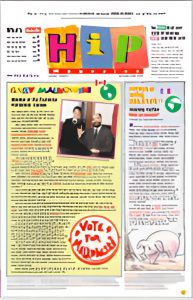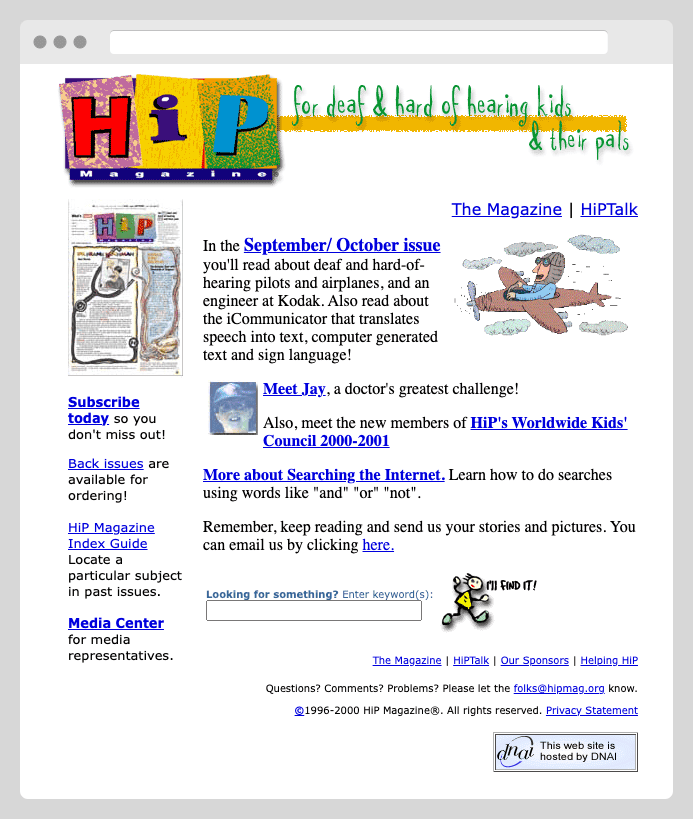Time Travel with Archive.org and Wayback Machine: Exploring HiP Magazine’s Digital Evolution
In the vast expanse of the internet, the past is never truly lost. Thanks to remarkable tools like Archive.org and the Wayback Machine, we can embark on a journey through time, revisiting websites from decades ago. Today, we’ll take you on a nostalgic trip back in time to explore HiP Magazine’s early digital presence and witness the transformation of this iconic publication.
A Glimpse Into HiP Magazine’s Digital History

HiP Magazine, a beacon of inspiration and education for deaf and hard-of-hearing children, has a rich history that spans more than two decades. In its early days, HiP existed primarily in print form, providing invaluable content to its young readership. However, as technology advanced, so did HiP’s reach and accessibility.
More than 20 years ago, HiP Magazine made its debut on the World Wide Web. This move marked a significant milestone in the publication’s history, as it transitioned from the print medium to a digital platform. In this age of rapid technological change, embracing the digital landscape became not only practical but also essential for reaching a wider audience.
Peering Into the Past: Screenshots and Impressions
With the assistance of Archive.org and the Wayback Machine, we’ve unearthed snapshots of HiP Magazine’s early digital presence. As we journey through these virtual time capsules, we can observe the evolution of HiP’s website design, content, and mission.
The Early Years (2000s): Back in the early 2000s, HiP’s website was very basic. It featured essential information about the magazine, its mission, and how to access its print editions. It included details about subscription options and contact information. No articles were published online at the time.
Digital Transformation: Today, HiP Magazine continues to thrive in the digital realm. Our transformation from print to digital has not only made the content more accessible but also more environmentally friendly, as digital publications reduce paper waste.
Other Fascinating Websites
Archive.org and the Wayback Machine aren’t just portals to HiP Magazine’s history; they are windows into the past of countless other websites and online projects. Here are some fascinating websites you can explore through these incredible tools:
- Geocities: Step into the early days of personal websites with Geocities, a platform that was once a hotspot for internet creativity.
- Netscape Navigator: Relive the web’s early days by exploring the website of the legendary Netscape Navigator browser.
- The Space Jam Website: Discover the nostalgia of the ’90s with the original website for the movie “Space Jam.”
- Early Blogging Platforms: Explore the origins of blogging by visiting platforms like LiveJournal and Blogger.
In conclusion, Archive.org and the Wayback Machine offer us the extraordinary ability to travel back in time through the digital realm, providing insights into the past of websites like HiP Magazine and a myriad of other online treasures. As we reflect on HiP’s digital evolution, we are reminded of the enduring commitment to empowering the deaf and hard-of-hearing community—a commitment that has stood the test of time.

